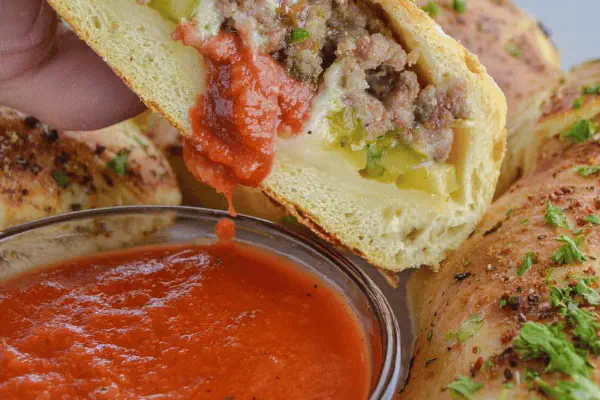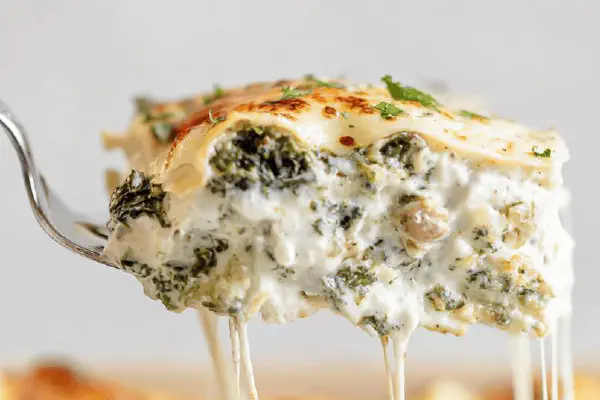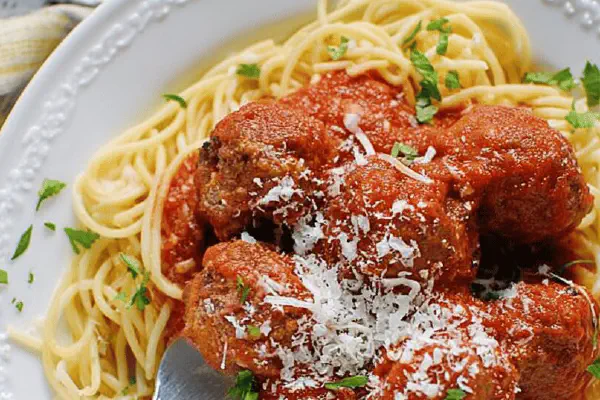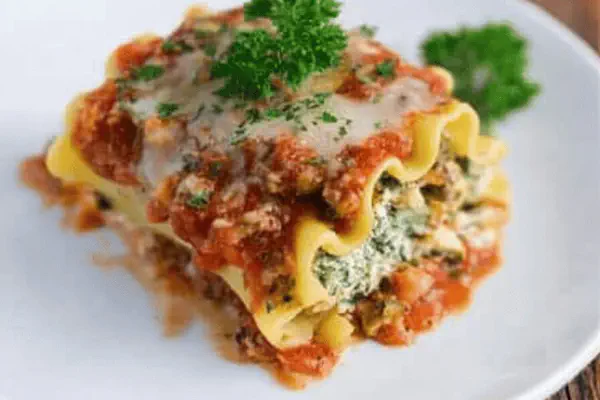Sauteed Spinach Sausage Pasta
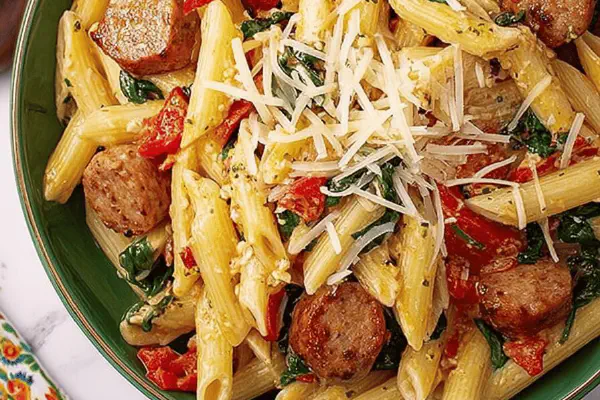
By Emma
Certified Culinary Professional
Ingredients
- 12 oz dried pasta of choice (rigatoni, penne, fusilli)
- 1 tbsp olive oil for sauté plus extra for tossing pasta
- 1 medium yellow onion, diced
- 1 tsp fennel seed, crushed slightly
- 6 oz fresh spinach leaves, packed
- 3 cloves garlic, minced
- 14 oz cherry tomatoes or grape tomatoes halved
- 15 oz Italian sausage, casing removed (substitute turkey sausage for leaner option)
- Salt and fresh ground black pepper to taste
About the ingredients
Method
- Cook pasta in salted boiling water until al dente, when you feel resistance but no crunch left. Drain well. Drizzle 1 tsp olive oil to pasta and toss quickly to keep noodles from glomming up.
- Heat 1 tbsp olive oil over medium heat in large skillet. Add diced onion. Sauté until onions get soft and edges start looking translucent and shiny, about 3 minutes. Listen for soft sizzle, no burning yet.
- Add crushed fennel seed. Toast them lightly with onions. You want a warm, slightly nutty aroma. Cook about 3 more minutes. Stir often to avoid scorching fennel bits.
- Toss in spinach and garlic. The leaves immediately begin to wilt and shrink. Watch closely, stir gently. When spinach reduced by about half and smells bright (around 3 minutes), move forward—never let garlic burn or turns bitter black.
- Add halved tomatoes and sausage meat. Simmer gently, breaking up sausage with spoon. Sausage should brown and cook through; tomatoes release juices to mingle with everything. Cook for about 7 minutes, allowing liquid to thicken slightly but not dry out.
- Return drained pasta to skillet. Toss everything vigorously—sausage, spinach, tomato juices coat noodles. Season with salt and pepper, tasting along the way. Heat all together for another 4-5 minutes so flavors marry.
- Serve hot. Drizzle with extra virgin olive oil if wanted. Parmesan cheese optional but recommended; boosts savory depth.
- Feedback encouraged. Reworking quantities, ingredients, and timing helped me nail what works best for personal taste and kitchen realities.
Cooking tips
Chef's notes
- 💡 Onion edges turning translucent means timing in. Not fully clear but no raw crunch left. Fennel seeds crushed lightly, toast them with onions. Don’t burn or powder forms, bitter taste. Smell should be warm, nutty, not sharp. Toss spinach and garlic next; spinach shrinks fast, watch closely or it turns limp and brownish. Garlic burns quick; stir slowly here to avoid bitter black bits.
- 💡 If sausage feels greasy post-browning, drain off excess fat. Keeps sauce cleaner, no oily puddles. When cooking sausage, crumble evenly, don’t mash or clump. Allows consistent browning and cooks through better. Tomatoes added last; burst warmth releases juices but don’t cook to mush. Keep some juice for coating pasta; thick sauce dries fast. If sauce watery, increase heat briefly but watch pasta does not stick.
- 💡 Pasta type matters for texture and sauce cling. Rigatoni or penne carry sausage bits well. Toss drained pasta with a teaspoon olive oil immediately; stops noodles sticking. Pasta continues cooking in skillet later; drain well to avoid sog. Use medium heat throughout; too high burns onions or garlic fast, ruins flavor balance. Adjust salt gradually; sausage often has seasoning already.
- 💡 Swap turkey sausage for pork if wanting leaner dish. Turkey milder, add seasoning to compensate. Frozen spinach thaws too much water—makes sauce watery and dilutes flavor. Baby kale can substitute fresh spinach but cooks tougher and longer. Fennel seed optional but adds that distinct licorice warmth; ground fennel or pinch works but less intense.
- 💡 Return pasta last and toss quickly but vigorously. Coats noodles evenly with sausage, spinach, tomato juices. Heat short time to marry flavors; pasta still firm but infused. Parmesan cheese optional; adds umami punch, sharpness lifts final dish. If overcooked spinach or dry sausage appears, next batch reduce cooking time on veggies or drain excess fat earlier.
Common questions
How to know when onions are ready?
Look edges for translucent sheen. Slight softness but not mushy. Listen for soft sizzle—no burnt bits. Visual key to avoid bitter notes. Slow medium heat helps control. Scent nutty, mellow means ready for next step.
Can I use frozen spinach instead?
Frozen adds excess water. Makes sauce watery, thins flavors. Drain well and squeeze before cooking. Baby kale or fresh spinach better texture and depth. If frozen only, cook slower, watch moisture levels carefully to keep sauce balanced.
What if sausage is greasy or messy?
Drain fat after browning. Keeps sauce cleaner. Crumble finely to cook evenly. Overcrowded pan steams instead of browning. If greasy, lift sausage out to drain, then return. If texture off, try browning separately before adding to skillet.
How to store leftovers properly?
Cool fully before refrigerating. Seal airtight to prevent drying out. Reheat gently with splash of broth or olive oil to revive moisture. Microwave on medium power or stovetop low, stir often. Avoid overheating build mushy texture.
